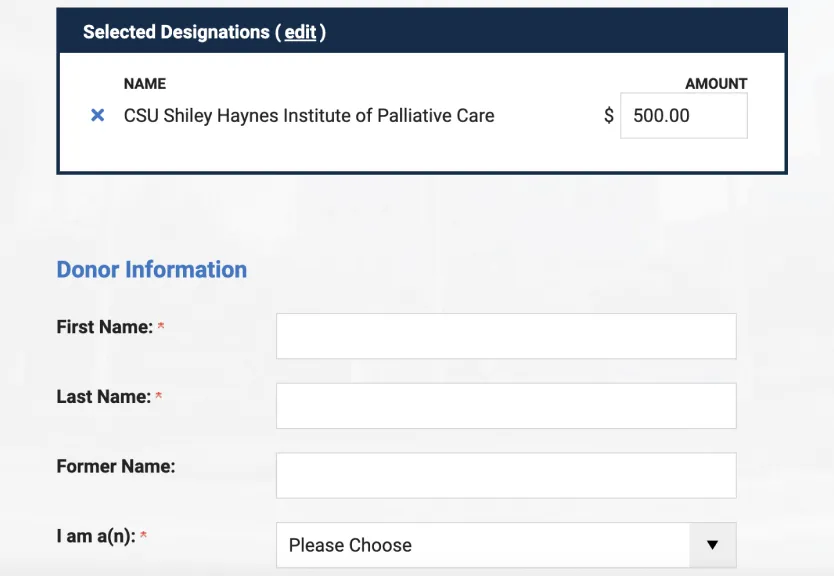The Expanding Role of PAs in Serious Illness and Palliative Care
On September 5, the San Diego Union Tribune reported the 10 fastest growing occupations in the county, which is about a third of the size of Rhode Island with more residents than the populations of 20 states. Number 1 on the list is Nurse Practitioner, and number 4 is Physician Assistant (5 of the 10 are in the health professions). This is just one indicator of the growing need for and popularity of advanced practice providers.
The National Commission on Certification of Physician Assistants (NCCPA), estimates that in 2020 nearly half of all PAs were working in settings that serve seriously ill patients who would benefit from palliative care: Family medicine, Internal medicine general and subspecialties, emergency medicine, and hospital medicine. The NCCPA estimates that only 0.1% of PAs were working specifically in hospice and palliative medicine, although this number represents a 216% increase over 2016.
“There are structural and regulatory barriers to PAs taking up a more substantive role in palliative and hospice care, per se,” noted Jennifer Moore Ballentine, Executive Director of the CSU Shiley Haynes Institute for Palliative Care. “For instance, in hospice, PAs are authorized to serve as attendings for patients in hospice care, but not if the PA is employed or contracted by the hospice. And they are still not allowed to certify terminal illness, conduct the face-to-face hospice certification visits, replace physicians in the IDT, or order drugs for hospice patients. That said, I fully expect that these barriers will fall under the workforce pressures.”
Indeed the National Hospice and Palliative Care Organization (NHPCO) has joined with the American Academy of Physician Assistants (AAPA) and the Physician Assistants in Hospice and Palliative Medicine (PAHPM) to propose changes to these regulations, which would allow PAs to order drugs for hospice patients and serve as attending physicians employed or contracted by a hospice for hospice patients. Judi Lund Person, NHPCO Vice President, Regulatory and Compliance explains, “This change will increase beneficiary access to care by allowing PAs, who could play an integral role in hospice interdisciplinary teams (IDTs), to provide efficient care and will give beneficiaries greater choice in personalizing their care.” Meanwhile PAs in all settings can benefit from having a palliative care skillset.
With that in mind, the CSU Shiley Haynes Institute for Palliative Care, in collaboration with the Physician Assistants in Hospice and Palliative Medicine (PAHPM), recently developed a 12-week, online, instructor-led course, PA Certificate in Serious Illness and Palliative Care. The first palliative care certificate-level course directed at PAs, it combines substantive self-paced didactic learning with weekly virtual “Grand Rounds” in which case studies illuminate the PA role in serious illness care.
The first cohort of this innovative offering concluded in August with strongly positive evaluations from participants: 100% agreed or strongly agreed their primary goal in taking the course was met; 100% said they would be able to immediately use the information they learned; 100% agreed or strongly agreed that what they learned in the course has improved their ability to provide quality patient care; and 100% said they would recommend the course to other PAs. The next cohort of the course starts on September 23.
“Our vision was to create a course for PAs delivered by PAs,” said Nadya Dimitrov, PA-C, DPM, DFAAPA, the lead developer of the course and Executive Director of PAHPM. “The palliative care workforce is stretched very thin, just when the core skills of palliative care – compassionate communication and whole-person complex symptom management – are increasingly important. Along with all the other chronic and progressive serious illness our population suffers from, across the lifespan, there are now millions of new serious illness patients who have survived COVID who need PAs skilled in palliative medicine.”
Tracy Piparo, PA-C, a student in the first cohort remarked, “This course was a comprehensive look at the importance of palliative care in primary care and how PAs play a large role in this. It encouraged and offered improvement on skills that many PAs already utilize to improve and support patient and family involvement and preparedness when faced with serious illnesses/diagnoses. Having the opportunity to work with classmates from a variety of specialties from across the US provided useful, unique perspectives from which to learn and develop improved skills.”
Other indicators that the PA role is becoming more important in serious illness care is the publication this month by Oxford University Press of the text Palliative and Serious Illness Patient Management for Physician Assistants, edited by Nadya Dimitrov and Kathy Kemle. Like the course, this text is the first resource to provide PAs with a fundamental framework for incorporating palliative care into practice in any setting. Efforts are also well underway to develop a blueprint for a specialty certification for PAs in palliative medicine.




